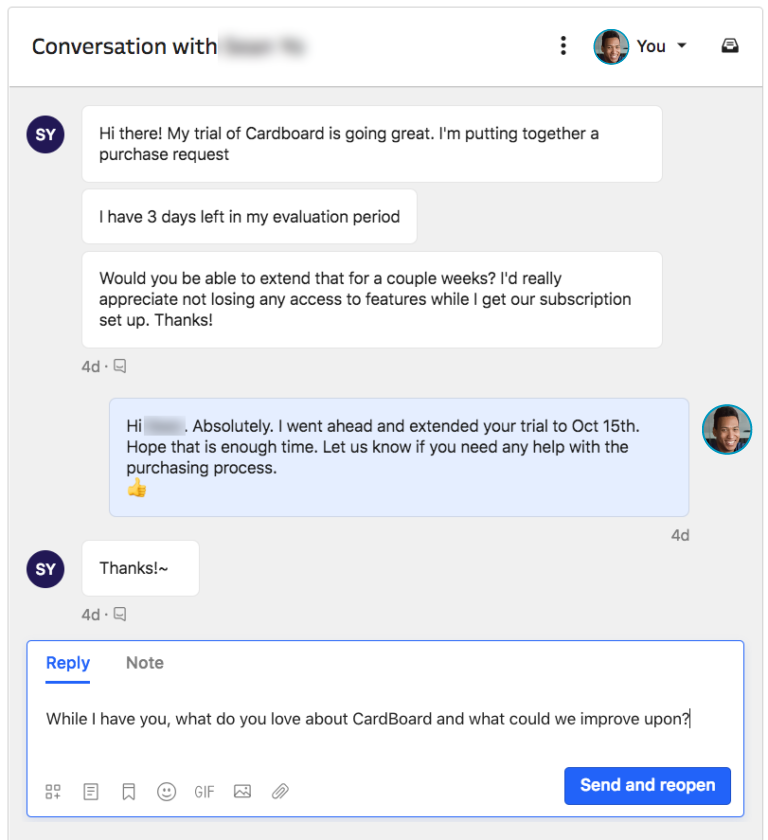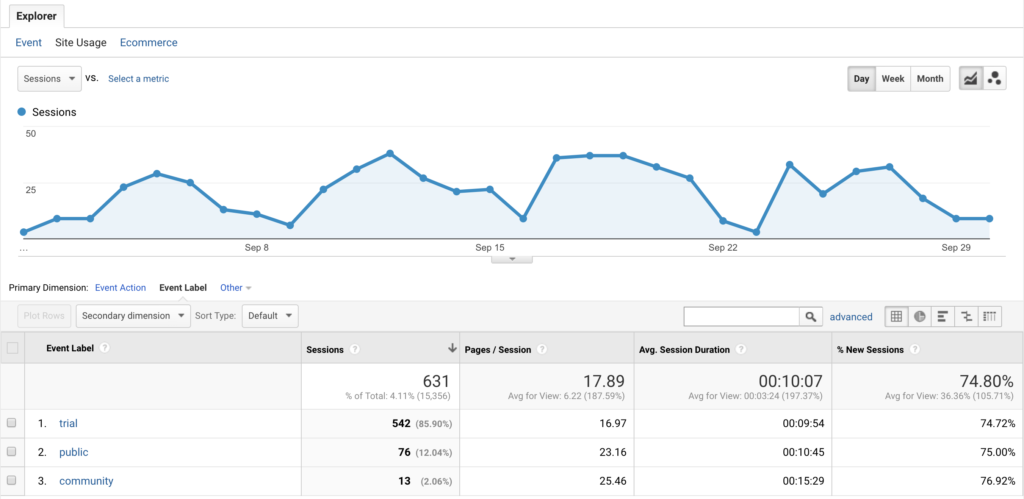Modern Product Management techniques for today’s SaaS business

Managing a Software as a Service (SaaS) product can be quite a challenge, but it doesn’t always have to be that way. Perhaps the best thing you can do to lead your SaaS product is to use other SaaS products. Whenever you need to do something, always check to see if there is someone out there who already provides a solution. What’s great about this is that most of them provide a free trial. So, if you don’t like it you aren’t out any money and you can try something else. After running a SaaS business for a couple of years now, we wanted to share a few of the product management services we use and love at CardBoard everyday.
Learn who your customers are and engage with them
If you were starting a new job today as a Product Manager, there are two simple things you need to do first:
1. Learn the product. Use it, become the most knowledge person about your product. After all, you are the product leadership.
2. Learn who your customers are and engage with them.
For #2, we use a service call Intercom. When you think about supporting customers, so many people still rely on the phone or a good ole email to support@blah.blah.com. While these things are ok, it’s note the future of customer service. Chat apps that are baked right into your application are the way to go. They provide an easy way for customers to reach out for help and allow you to be responsive.
I included a recent conversation from a trial customer who wanted to extend their trial. I happily did that for them, but also was able to strike up a conversation and get some valuable feedback on our product. Use every opportunity you have to engage with your customers so that you can learn more about them and your product.

Intercom is much more than a customer service tool. We also use it to send automated messages to our customer. When we get someone to sign up for a free trial, we also give them some tutorial information to help them get started. Onboarding is a critical step to help with free trial to revenue conversions. Don’t overdo it, but find the right content at the right time to help your new customers understand your product and how it can help them.
Analytics and Reporting
This one is a no brainer. Every SaaS product today should be using gathering data on use and reviewing that data. Perhaps the real issue is that we have too much data and we need to do a better job asking questions. On a good day (meaning we do fail at this sometimes), we create the questions we want to know and more importantly, we try to understand how the answers will help us drive the business. If you collect data but don’t do anything with it, is it really necessary and valuable?
Google Analytics is currently our “go to” for marketing analytics. Probably because it is free and we haven’t had enough time to look for something better. When our customer sign up for an account, they have three options: start a free trial, create a limited free account, or buy a subscription. We wanted to know if the limited free accounts, were keeping people from trying the full featured trial and potentially causing a loss in revenue. By adding a Google Analytic event, we were able to tell that about 12% of signups were signing up for free accounts. This was better than I expected, so we decided to keep things as is.
The viability of your business model is also important. You need to figure out what your Key Performance Indicators (KPI) are for your business and find a tool that helps you monitor them. The following blog post from Lean Case has a good explanation of Customer Acquisition Cost and Lifetime Value.
Canaries and Early Adopters
When you are building new features, there can be a constant struggle between building something perfect with all the bells and whistles or releasing earlier with things not quite completed to get feedback. The later aligns well with the Lean Startup movement and is usually the approach I like to use. As a Product Manager, how do you be ok with putting something out there that isn’t done? First, you don’t have to give the new feature to every customer. If you have built a good relationship with a few key customers, reach out to them and ask them if they would like to try out a new feature. If they say “yes”, then great! Set the right expectations with them that it is still in development. Make sure you get feedback from your customers and learn what adjustments you may need to make. This is “Measure and Learn” part of the Lean Startup method.
Several products such as Microsoft Windows 10, Google Chrome and Instagram use Canary Releases to send out “bleeding edge” features to a small percentage of their customer base. I would argue this helps them build better products and finds big problems before your entire customer base does. Talk to your developers, they might already have something in place to do this. It should mesh really well with Continuous Improvement and Continuous Delivery (CI/CD).
There are a few services out there that can help you with this strategy. One that we have used is called LaunchDarkly. The general idea is that your application has feature flags and toggles that allow you to develop rules for turning things on and off.
Building a Minimum Viable Product (MVP)
In working with several Product Managers over the years, someone keeps telling them “Ask the development team for way more features than you want, because they are always going to cut down your list”. Whoever is telling new Product Mangers this, I wish they would stop (at least if the product is SaaS product). The leadership for a product and those who develop it need to work together.
In order to get something to market quickly and get feedback and then build that next, an MVP is the way to go. Now, MVP is not a license for developers to ship “crap”. The beauty of a SaaS business is that we can always build on and add more later. Great development teams with the right pipeline can push changes to production the same day. For most businesses it can be detrimental and extremely expensive to change something after production. As a Product Manager, take advantage of this.
Post-It Notes or even User Story Mapping is a great way to discovery and plan your releases for an MVP. In the image below, the team works together and creates a story map for what they want to build next. They then drop a horizontal divider and negotiate what is in or out for the first release.

Didn’t find what you need? Visit our Help Center to find answers or get in contact with our team.
Ready to try CardBoard for yourself? Sign up to start your 14 day free trial!
[author]

